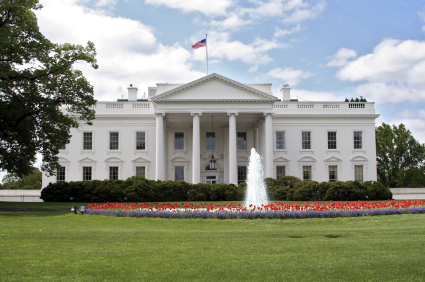
The White House has just released the first plans for retrospective reviews of existing regulations from thirty agencies, making a notable step toward evidence-based governance.
Thirty federal agencies – from the Advisory Council on Historic Preservation to the Social Security Administration – have now submitted to the White House their plans for reviewing existing significant regulations. The release of these plans marks an important step toward promoting a greater culture of evaluation in the modern regulatory state. Whether that culture takes hold, of course, will depend on the steps that follow in the months if not years ahead.
The agencies’ plans have just been released on the White House’s “good government” website (recently renamed the “21st Century government” website). They came about in response to an order President Obama issued in January of this year, calling upon agencies to conduct periodic “look back” reviews of existing regulations to determine whether some rules might be “outmoded, ineffective, insufficient, or excessively burdensome.” Obama announced that agencies “must measure, and seek to improve, the actual results of regulatory requirements.”
In a subsequent memo issued in February, White House regulatory “czar” Cass Sunstein noted the “importance of maintaining a consistent culture of retrospective review and analysis throughout the executive branch.” For thirty years, the office Sunstein directs – the Office of Information and Regulatory Affairs (OIRA) – has reviewed agency regulations before they are adopted. But as Sunstein acknowledged in his February memo, “[b]efore a rule has been tested, it is difficult to be certain of its consequences, including its costs and benefits.” Only with expanded efforts to study the actual results of regulations – after they have been adopted – can agency officials and the public know whether they are getting true value from the thousands of new rules issued each year.
To be sure, agencies have long engaged in research and analysis, and they no doubt give thought to how their existing regulations are working. But in the past, agencies’ ex post assessments have typically been ad hoc and informal. Far too seldom have their judgments been based on rigorous empirical studies. Obama’s emphasis on the “actual results” of regulation therefore articulates a new, and potentially quite high, aspiration for creating a culture of evidence-based government.
Judged against this standard, the just-released agency plans will probably disappoint. They are written in rather formulaic fashion, and they are, after all, just plans. Moreover, many of the initial rules agencies have proposed to put under the microscope seem underwhelming. Frequently they are what might be considered “paperwork” rules, with agencies hoping to find ways to streamline reporting and make more information available online. The Treasury Department, for example, plans to review an Internal Revenue Service regulation so as to correct instructions about where to file for a tax refund or credit. The Commerce Department’s plan identifies, among other things, the rule governing the “application number” and “filing date” for patents.
Of course, such paperwork rules are certainly fair game, and no one should trivialize paperwork burdens or dismiss the desirability of making more information available online. In a video statement on the White House website, Sunstein declares that taken together the plans call for “aggressive steps” to save regulatory costs, yielding hundreds of millions of dollars in savings and tens of millions of hours of paperwork time.
But few of the rules listed in the plans as targets for review are the salient regulatory issues of the day, even if they are significant in some other way. Readers of these plans will not find, for example, a proposal to determine whether the Transportation Security Administration’s current airport passenger screening procedures in fact deliver an optimal balance between security, privacy, and ease of travel. Nor will one find a plan to figure out whether (and by how much) federal regulation has enhanced environmental quality versus sparking the flight of manufacturing operations overseas. Perhaps we must wait until later for more of the big, substantive policies to be chosen for evaluation.
The current plans do, though, provide a few encouraging signs. The Department of Labor, for example, reports that it “is contemplating how to incorporate the use of experimental designs to determine the impact of various regulations.” Similarly, the Department of the Interior “will consider experimental or quasi-experimental designs, including randomized controlled trials” – at least where “feasible and appropriate.” The federal government should indeed be more receptive to the kind of rigorous research needed to discern with confidence the substantive impacts of regulation.
Rigorous, ex post evaluation research can not only help regulators understand and improve the rules under evaluation; by extension, it can also help inform future regulatory decision making. For example, the Environmental Protection Agency announced in its plan that it will be undertaking an ex post evaluation of the compliance costs of five rules, with the aim of learning how their actual costs compare with the predictions made at the time the rules were first promulgated. The agency hopes to use what it learns to improve its ability to forecast costs when issuing new rules in the future.
Evidence-based governance requires making more of these kinds of connections between ex post evaluations and ex ante policy decisions. The plan of the Department of Homeland Security (DHS) strikes a most encouraging note in this respect. DHS says it will “build in retrospective review at the earliest stages of regulatory development.” Its plan calls for the department’s component agencies to “incorporate a discussion of retrospective analysis goals into their rulemaking project planning” in order “to ensure that the component considers retrospective analysis through the lifespan of the regulation.” By thinking hard about evaluation even during the development of a new rule, agency officials will not only be better positioned to conduct high quality evaluation research at some point down the road – but the discipline such thinking imposes should also help officials improve the design of the rule at the outset.
Nearly twenty-five years ago, social scientist Serge Taylor wrote Making Bureaucracies Think, a book about how the National Environmental Policy Act imposed analysis requirements on government agencies, prompting them to think more seriously about the environmental effects of their actions. The retrospective regulatory review process Obama has imposed this year on agencies might well make a fitting sequel: Making Bureaucracies Think – Part II. Such a sequel would probably never make the New York Times bestseller list. But what matters more is that the principles of regulatory retrospection and evidence-based governance become classics.




